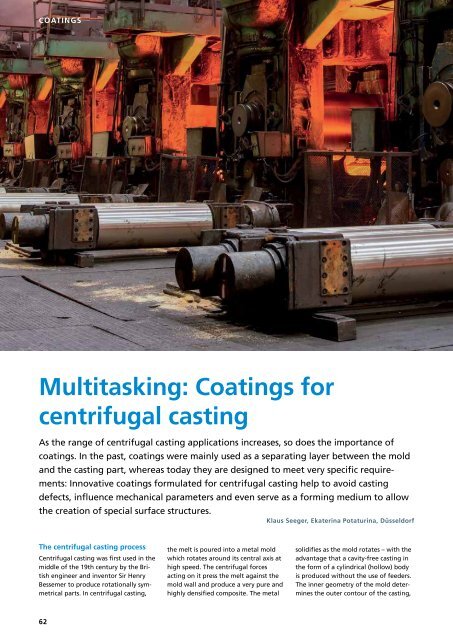CPT International 02/2019
- No tags were found...
You also want an ePaper? Increase the reach of your titles
YUMPU automatically turns print PDFs into web optimized ePapers that Google loves.
COATINGS<br />
Multitasking: Coatings for<br />
centrifugal casting<br />
As the range of centrifugal casting applications increases, so does the importance of<br />
coatings. In the past, coatings were mainly used as a separating layer between the mold<br />
and the casting part, whereas today they are designed to meet very specific requirements:<br />
Innovative coatings formulated for centrifugal casting help to avoid casting<br />
defects, influence mechanical parameters and even serve as a forming medium to allow<br />
the creation of special surface structures.<br />
Klaus Seeger, Ekaterina Potaturina, Düsseldorf<br />
The centrifugal casting process<br />
Centrifugal casting was first used in the<br />
middle of the 19th century by the British<br />
engineer and inventor Sir Henry<br />
Bessemer to produce rotationally symmetrical<br />
parts. In centrifugal casting,<br />
the melt is poured into a metal mold<br />
which rotates around its central axis at<br />
high speed. The centrifugal forces<br />
acting on it press the melt against the<br />
mold wall and produce a very pure and<br />
highly densified composite. The metal<br />
solidifies as the mold rotates – with the<br />
advantage that a cavity-free casting in<br />
the form of a cylindrical (hollow) body<br />
is produced without the use of feeders.<br />
The inner geometry of the mold determines<br />
the outer contour of the casting,<br />
62

















